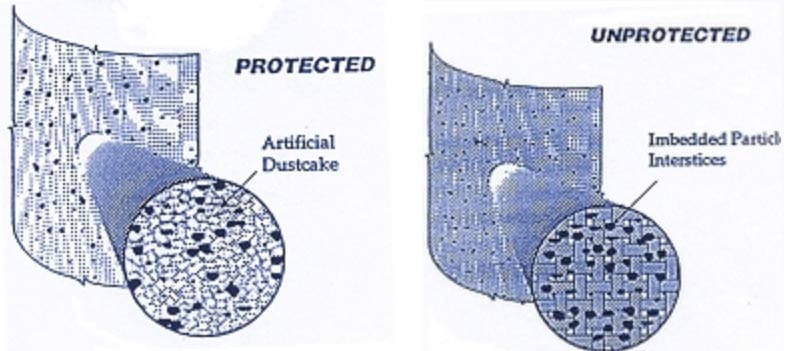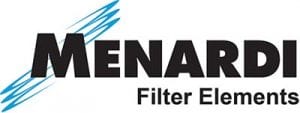RESOURCES
What Is a Dustcake?

The fabric openings may be larger than some of the submicron material being collected. Therefore, until the initial later of dustcake is formed, the filter bags are unprotected. If the system is fully started up before the initial dustcake has formed, some of the fine micron material being conveyed penetrates through part of the filter bag and becomes embedded. This blinds off part of the openings that air normally passes though, causing a rise in differential pressure. This pressure cannot be corrected until the filter bag is replaced.
► Process alterations (such as a change in raw materials)
► Adding a mechanical collector prior to the collector
► Decreasing production rates
► Precoat Filter Material
A precoat material is often recommended to create an artificial dustcake to protect new fabric during start-up (Note: A precoat is not required for membrane laminated fabrics). These types of conditioning agents are injected into the baghouse to establish a porous control layer on the filter bag surface to protect it from particulate bleed-through, blinding and problems caused by hydrocarbon and moisture carryover.
A precoat should consist of multi-shaped particles. The varying particle sizes allow air passages to remain open, keeping pressure drop down and airflow maximized.
The filter bag fabric serves as a substratum or matrix for the dustcake to form. It is critical to use a fabric that forms a collection surface permitting development of a loose and porous dustcake. The ultimate bag construction must also provide for a cake release to occur with the cleaning cycle, allowing for a good regeneration of permeability.
Typically, felted fabrics are used in pulse jet applications to provide durability in rougher cleaning systems and woven fabrics are used in shaker and reverse air units, although there is some crossover with each fabric.

